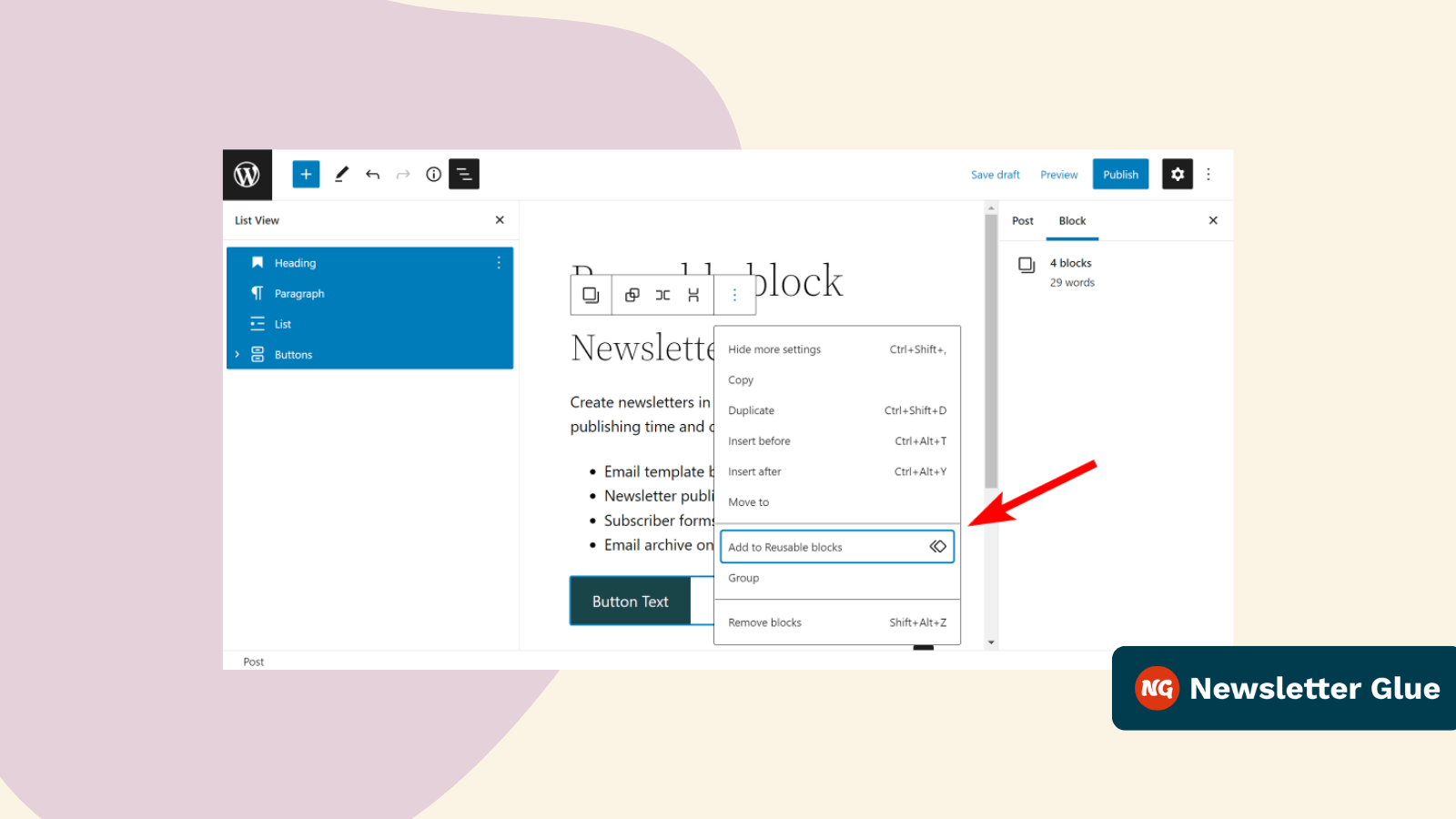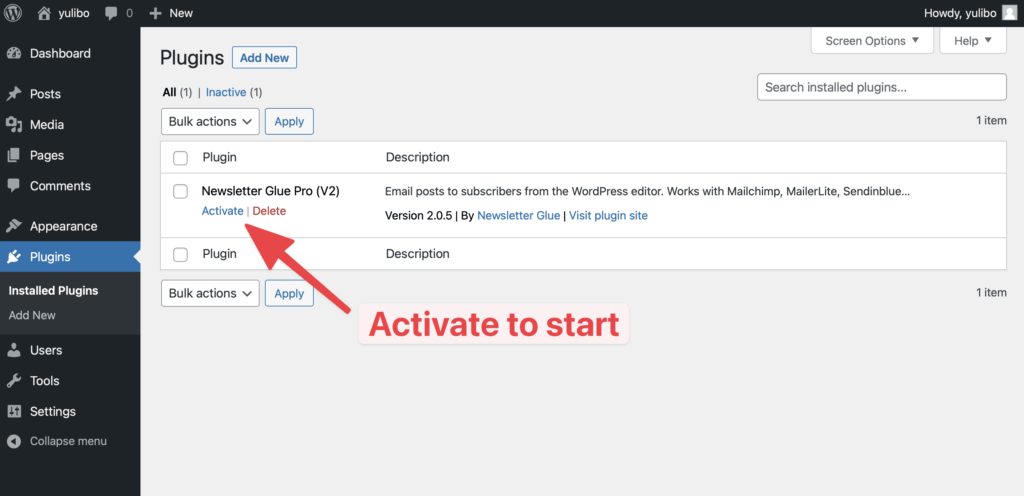Do you want to learn about creating and adding reusable blocks to the editor?
The WordPress block editor has transformed the way we use WordPress. It now includes the ability to create complex designs using a visual editor.
In this article, we’ll explain what a reusable block is, how to use it and how it can help you save time.
What is a Reusable Block in WordPress?
A Reusable Block is an individual block or a group of blocks that are designed and stored for later use in the WordPress post editor.
Blocks are the building blocks of the WordPress editor and can be used to create complex layouts. Any block type, including paragraph block, image block, and video block, can be used to create reusable blocks. Once created, a reusable block can then be inserted into any post or page on your WordPress site.
Reusable blocks are a great way to streamline your workflow in the Gutenberg block editor. If you find yourself repeatedly using the same blocks, consider creating a reusable block. This will save you time in the long run and make creating content in WordPress a breeze.
What are the benefits of using a reusable block?
There are many benefits to using a reusable block in WordPress. Perhaps the most obvious benefit is that it saves you time. If you find yourself using the same content over and over again, a reusable block can be a real time-saver.
Other benefits include:
Consistency: It can help you maintain a consistent look and feel on your website. If you have a block of content that you want to use in multiple places, but you want it to have a consistent look and feel, using a reusable block can help you achieve that.
Manage content efficiently: If you have a lot of content that you want to use in multiple places, you can manage it all from a single screen by using reusable blocks. You can modify the content on one screen, and that change is reflected everywhere the reusable block is used on the website.
Import and export: If you want to use the same block of content on another website, you can easily create a reusable block, export it and then import it into the other site. This can be a real time-saver if you find yourself creating similar content on multiple websites.
There are many other benefits to using reusable blocks in WordPress. These are just a few of the most obvious and useful benefits.
How to create a reusable block in WordPress
It is very simple to create a reusable block in WordPress. Simply open a post or page in the Gutenberg WordPress editor and start adding the blocks that you want to include in the reusable block.
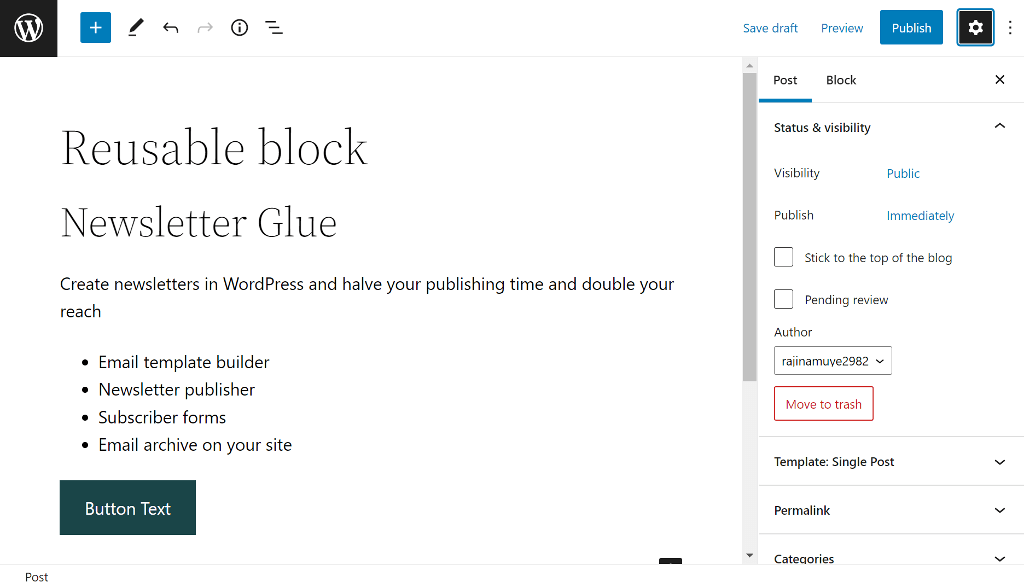
Then, on the top bar, click the three lines or use the shortcut Shift + Alt + O to open the List View.
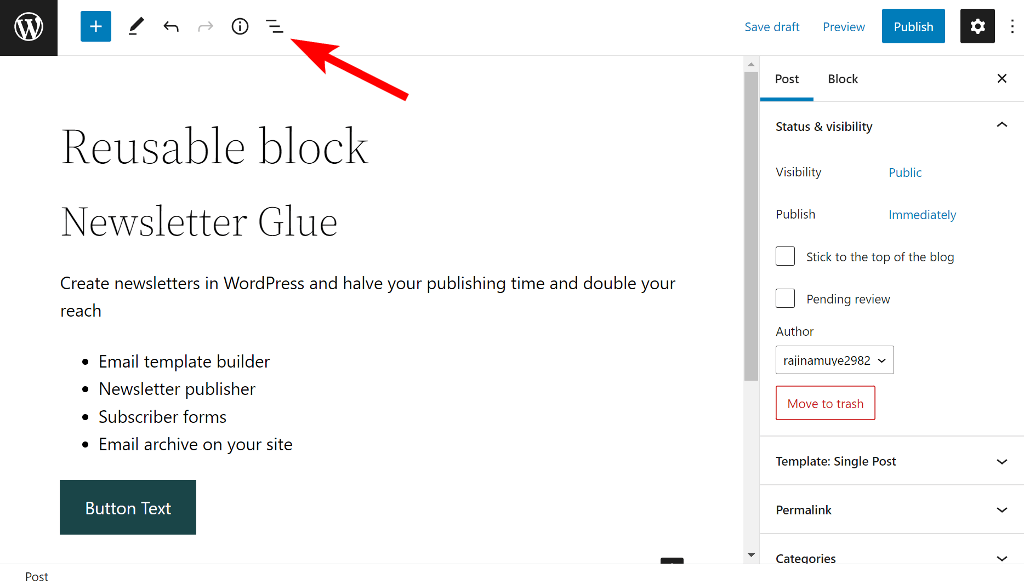
While in the list view, hold down the Shift key and select all of the blocks you want to add to the reusable block.
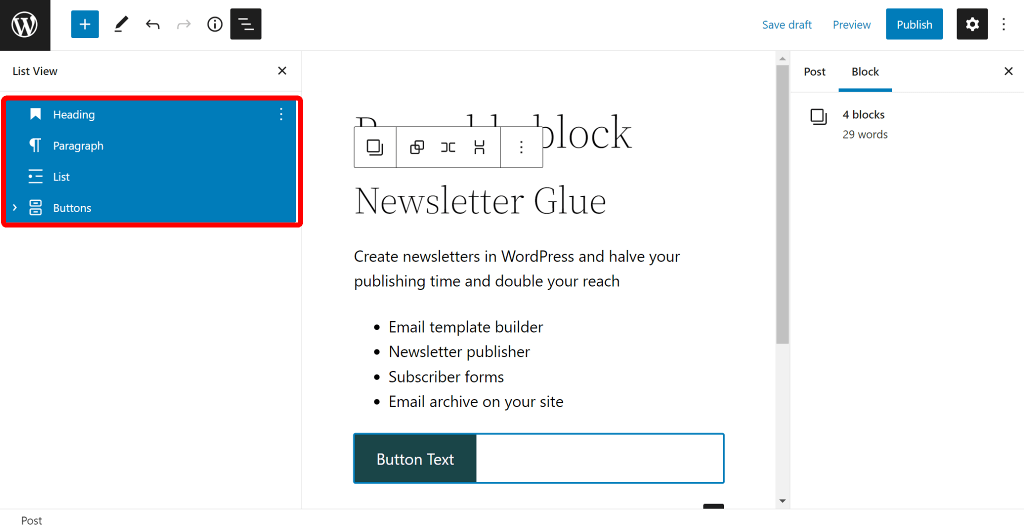
Next, click the three dots at the end of the block toolbar in the editor to bring up a menu and then click on Add to Reusable blocks.
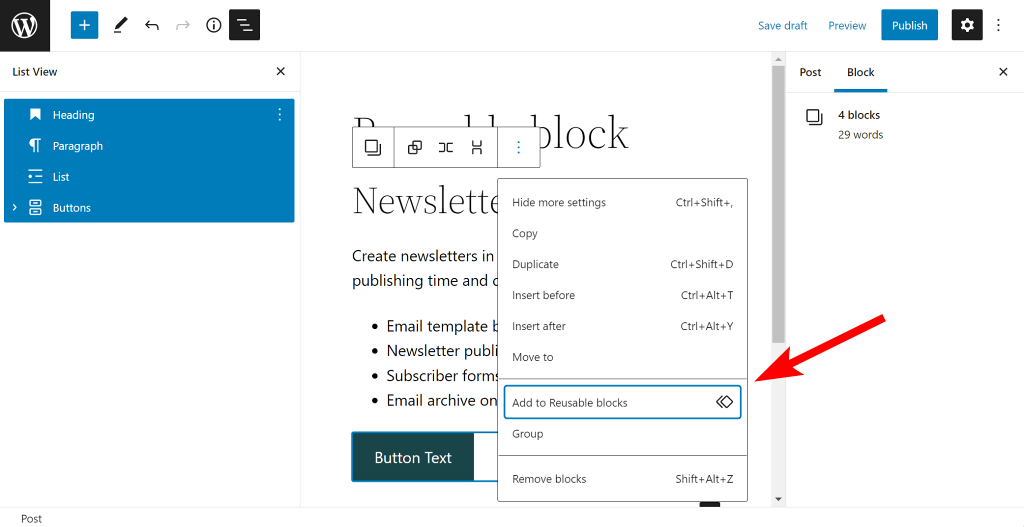
A popup will appear, prompting you to name it. Enter a name and press the Save button.

The group of blocks are now saved as a reusable block, which you can now add anywhere on the website with a few clicks.
You can also make a reusable block from an existing group of blocks on the page by selecting them from the list view and following the steps outlined above.
How To Add a Reusable Block to a WordPress page or post?
After you create a reusable block, open any page or post in the WordPress block editor and click on the block inserter button.
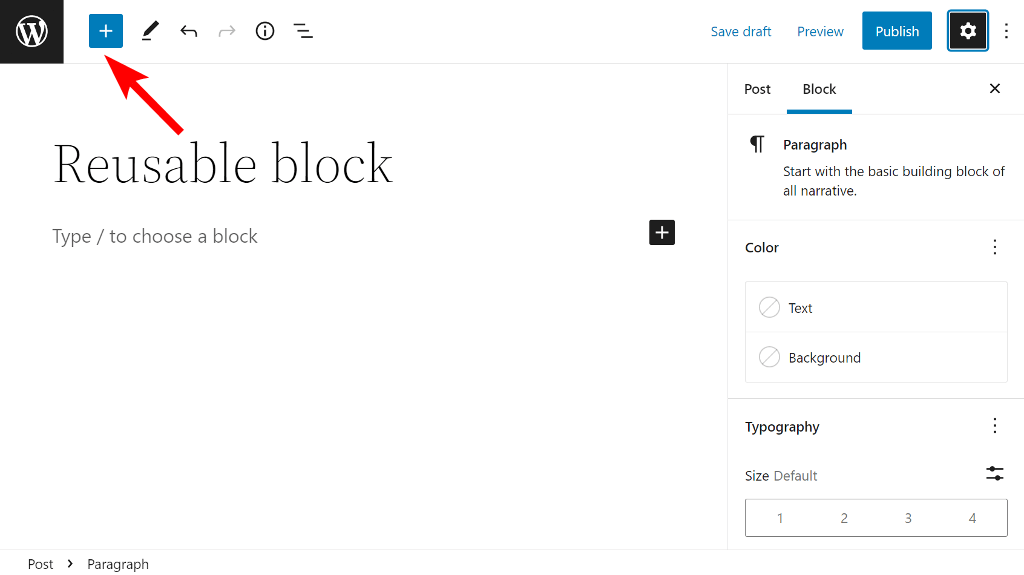
Aside from blocks and patterns, you’ll notice a new tab added. Click on the Reusable tab and it’ll display all the blocks you’ve created.
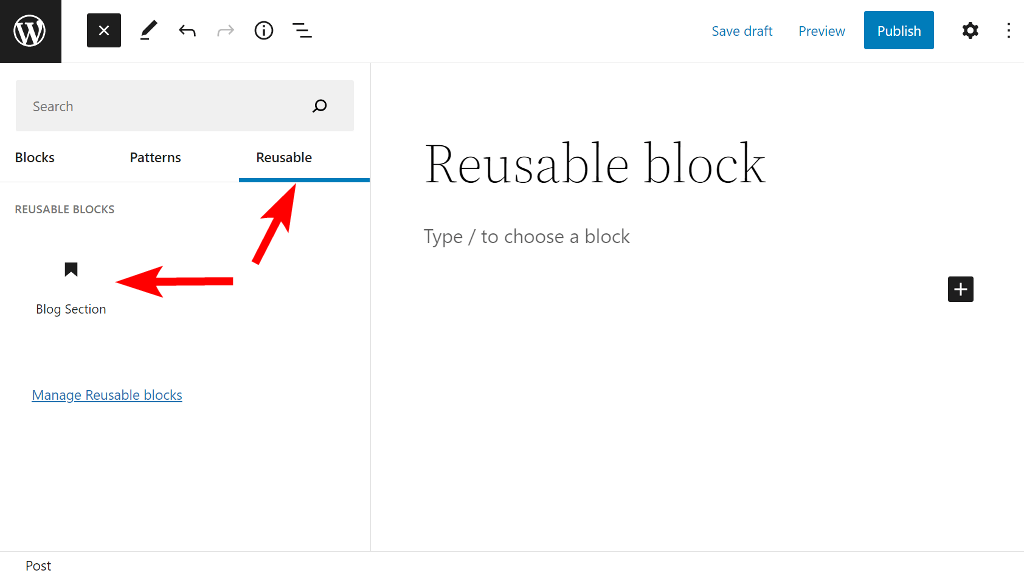
Click on any of the blocks to add it to the editor. It’ll be added exactly how you created it.
If you remember what you named the reusable block, you can use the add block shortcut “/” followed by the name of the block to add it to the editor instantly.
For example: “/blog-section”.
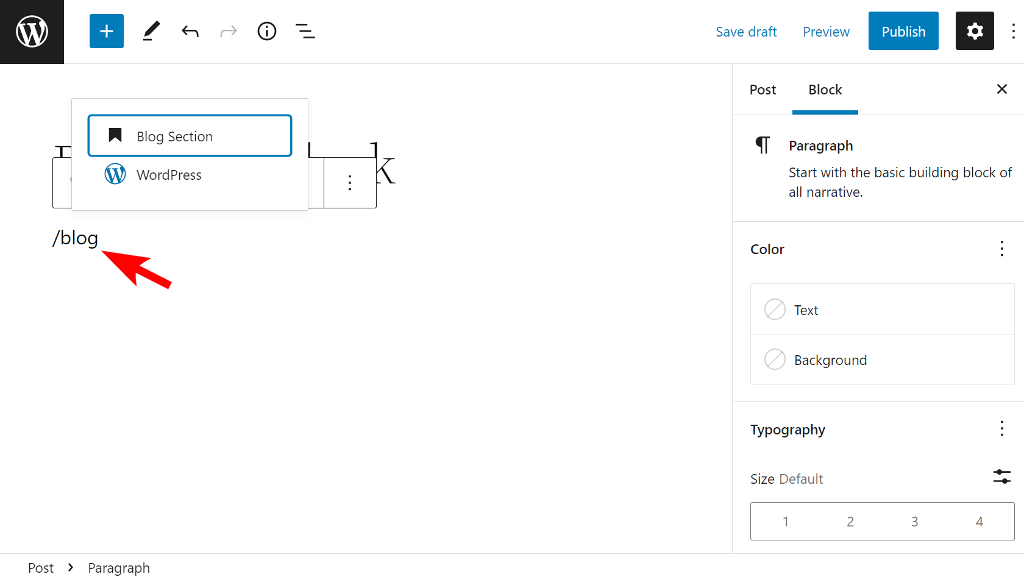
Reusable block vs regular block
After you’ve added the block to the editor, you have two options. You can either keep it as a reusable block or convert it to a regular block. Confused as to what does all of this mean? Don’t worry, we’ll explain the difference between the two.
Reusable block: If you make changes to the reusable block, the changes are applied to every instance where you’ve used the block.
Regular block: This will convert the reusable block to a regular block, and any changes you make will only apply in that particular post or page.
To convert a reusable block to a regular block, select the block and click the three dots on the block toolbar. In the menu, click on the ‘Convert to regular blocks’ option.
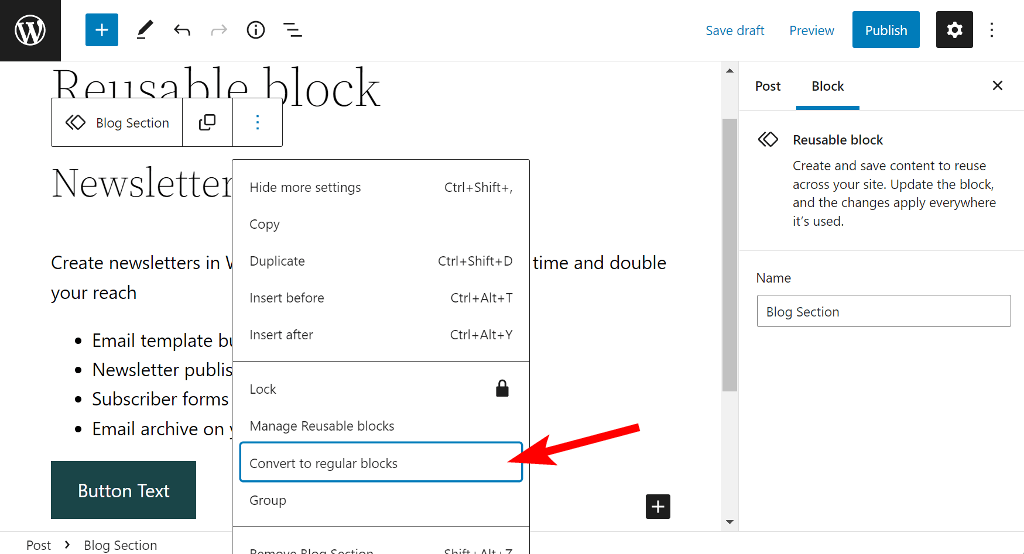
After converting, you can edit them as you want and it won’t affect any other place where you’ve used the reusable block.
Manage reusable blocks
WordPress allows you to manage all of your reusable blocks from a single screen, where you can edit, import, and export them.
There’s no direct way to get to this page from the navigation menu, so let’s see how to get there.
In the block editor, open any page or post and click the block inserter button in the top bar. Switch to the Reusable tab and then click the Manage Reusable blocks link.
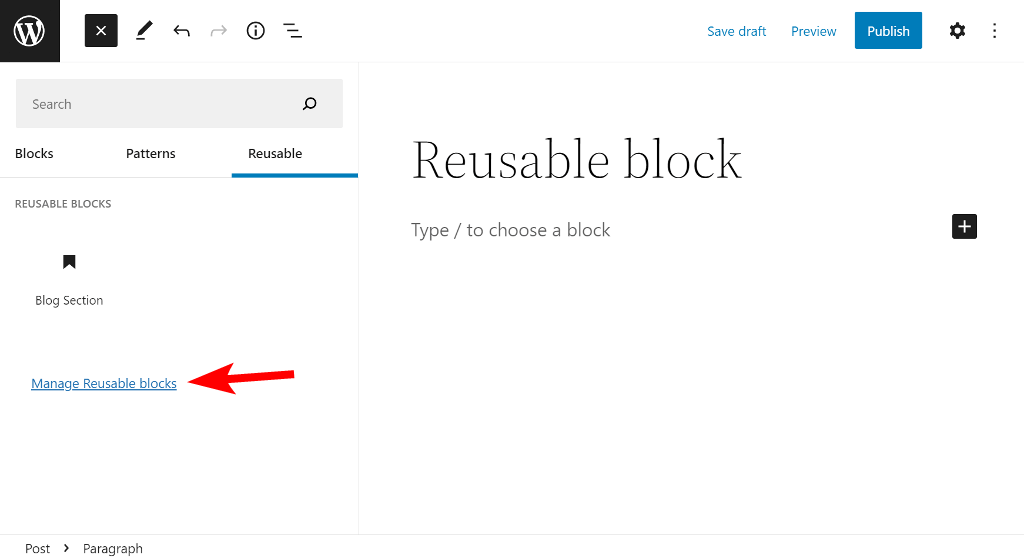
This will take you to a page where you can see and manage all of the reusable blocks you’ve created.
Edit and updating reusable blocks
After you’ve created the reusable block, you can easily update its content whenever you want to. Any change you make to the reusable block will update it in every instance it has been used.
On the reusable block page, click on any of the blocks you want to edit to open it in the editor. Make changes to the content as desired, then click the Update button in the top bar. That’s how easy it is.
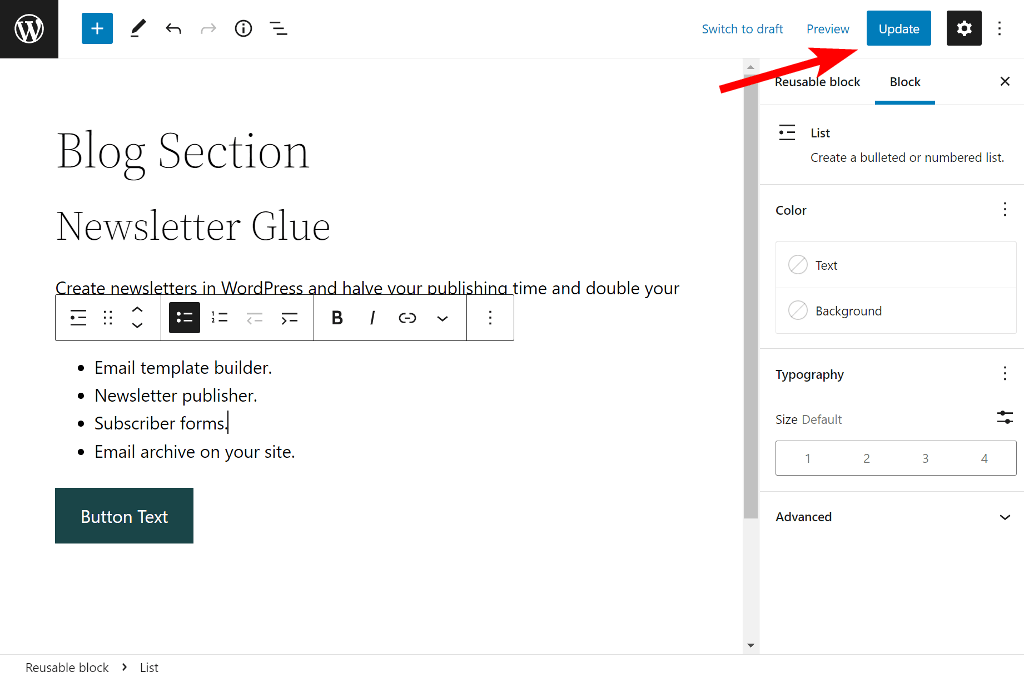
You can also import or export the reusable blocks. Let’s see how to do that.
How to export a reusable block?
Exporting the reusable block allows you to use it on other websites. To export, go to the Manage Reusable Blocks page and hover over the block you want to export. Click the ‘Export as JSON’ link beneath the block to save the file to your computer.
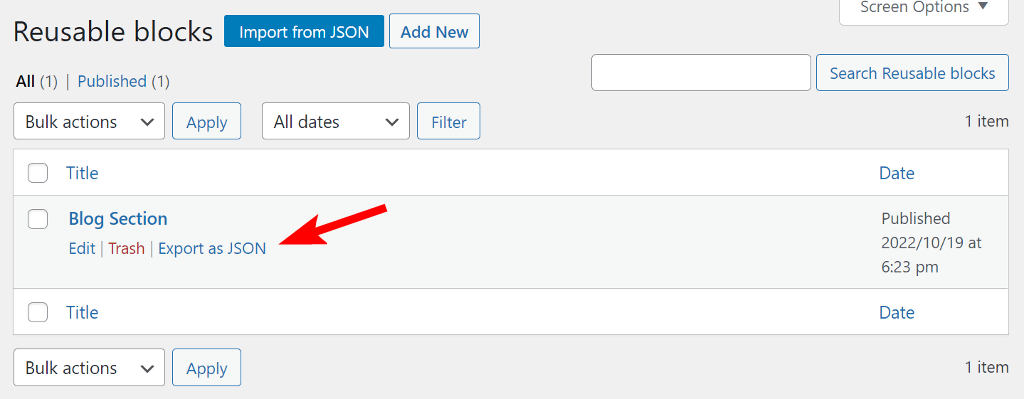
How do you import and use this file on other websites? Let’s find out.
How to import reusable blocks?
Navigate to the Manage Reusable Blocks page and look for the ‘Import from JSON’ button at the top. Click it, then select the JSON file from your computer and click Import.
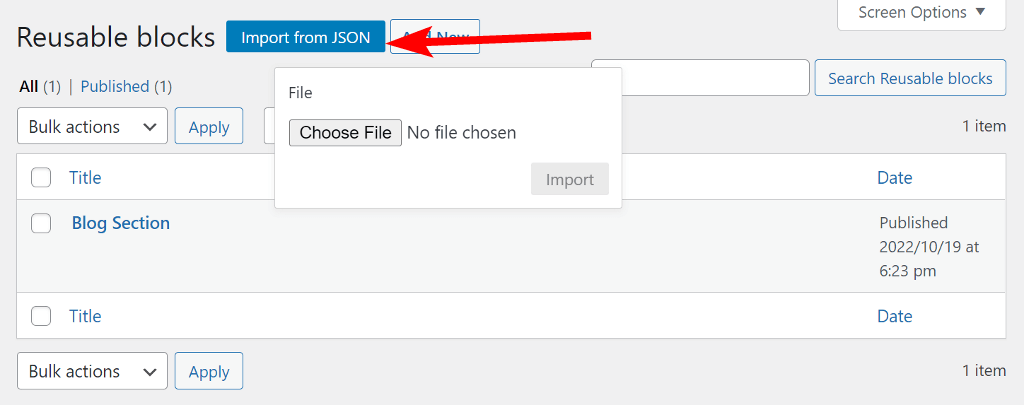
That’s it! Aren’t WordPress reusable blocks a major time saver?
Next: Halve your newsletter publishing time
Along with your website, if you regularly send out newsletters, you can reduce your publishing time by using the Newsletter Glue plugin.

It’s a WordPress newsletter plugin that allows you to create newsletters directly in the WordPress editor. You can create reusable blocks and use them in your newsletter content to save time on each issue.
It integrates with the vast majority of popular email marketing tools, so you won’t have to change ESPs to use it. Check out Newsletter Glue to halve your publishing time and double your reach.
Wrapping up: WordPress reusable blocks
WordPress reusable blocks is a powerful feature that can help you save time and streamline your workflow when creating WordPress posts and pages.
By creating a library of reusable blocks, you can quickly insert pre-designed content into your post or page, making it easy to create complex layouts with a few clicks. In addition, reusable blocks can be exported and used on other websites.

